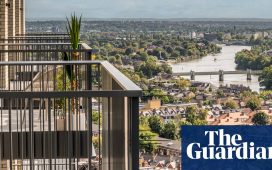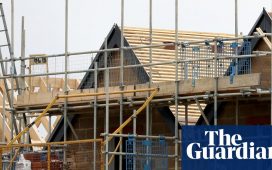Receive free Commercial property updates
We’ll send you a myFT Daily Digest email rounding up the latest Commercial property news every morning.
It wasn’t really surprising that Meta, the tech giant formerly known as Facebook, decided to break its lease on one of two buildings it had taken at British Land’s development in London’s west end.
Big Tech’s aggressive hiring and expansion plans have slammed into reverse. Its workforce has embraced remote working whether on the west coast or in the west end. London’s lengthy, costly commutes mean “hybrid” working has proved more enduring after the enforced restrictions of the pandemic than in other European markets.
What was interesting was that a company founded only in 2004 had signed up to a 20-year lease with no break clauses — a contract it paid the equivalent of about seven years of rent to exit. That type of long-term, rigid lease is starting to feel like a relic from another era.
There have been regular predictions of doom for offices ever since the pandemic proved that not everyone needed one, and certainly not all of the time. Jefferies last week noted that London vacancies are at a 30-year high, putting pressure on rents. Occupiers have been cutting their space requirements drastically, demanding better amenities and more flexibility.
“Covid put the desire for flexibility on steroids,” said Marie Dormeuil, from industry analytics specialist Green Street. “Offices were such a sleepy sector. It’s becoming much more operationally intensive.”
This is least the case in the top tier of the market, where blue-chip names take large amounts of space in expensive “greenium” buildings with the best sustainability credentials. Scarcity of buildings that tick the right environmental boxes means landlords still hold sway; companies spending to fit out their own headquarters also want certainty of tenure.
But even so, 15 years is the new 20. Clifford Chance’s 320,000 sq ft letting for its new City HQ was a 20-year lease with a 15-year break but also included a near-term option to hand back space, and two further break options on certain floors during the lease.
Outside that rarefied category, the market is in flux. London was always unusual in its landlord-friendly leases: the city’s average lease length for prime space is 10 years, compared to six in Paris, five in Berlin and three in Madrid, according to Savills. For the market as a whole, lease lengths have dropped sharply in recent years.
In part this is down to the rise of flexible office space, like co-working and serviced offices, which (thanks to the unyielding traditional structure of the market) have taken a bigger share of London’s office market than in other European cities. Increasingly, though, the mid market is demanding more from landlords as well. British Land has Storey, its fully managed office brand, while Land Securities plans to triple the size of its flexible offering Myo this year.
Great Portland Estates wants at least a quarter of its portfolio to be flexible, with smaller offices let on shorter leases of perhaps three to seven years with fit-out and a full range of building services generally provided by the landlord. “The real estate industry is beginning to offer up some of the benefits of outsourcing and technology to make customers’ lives easier,” said GPE boss Toby Courtauld.
This, frankly, makes for harder work and higher cost for a sector that could previously largely ignore tenants once they’d signed on the dotted line. Office valuations and financing, which have always been underpinned by long, predictable leases, must adjust for greater risk. But the sector has so far managed to extract a price for increased flexibility and services, helping to support market rents overall.
This demand for flexibility could start to seep into the prime part of the market, with blue-chip occupiers choosing to supplement core space with flexible alternatives. Occupiers are less willing to pay for “just in case” space, especially having been lumbered with excess in the past. Landlords report interest from existing, traditional occupiers for overspill or occasional space in flexible offices designed with smaller companies in mind.
In the post-pandemic world, it isn’t just office workers who want a hybrid approach.











